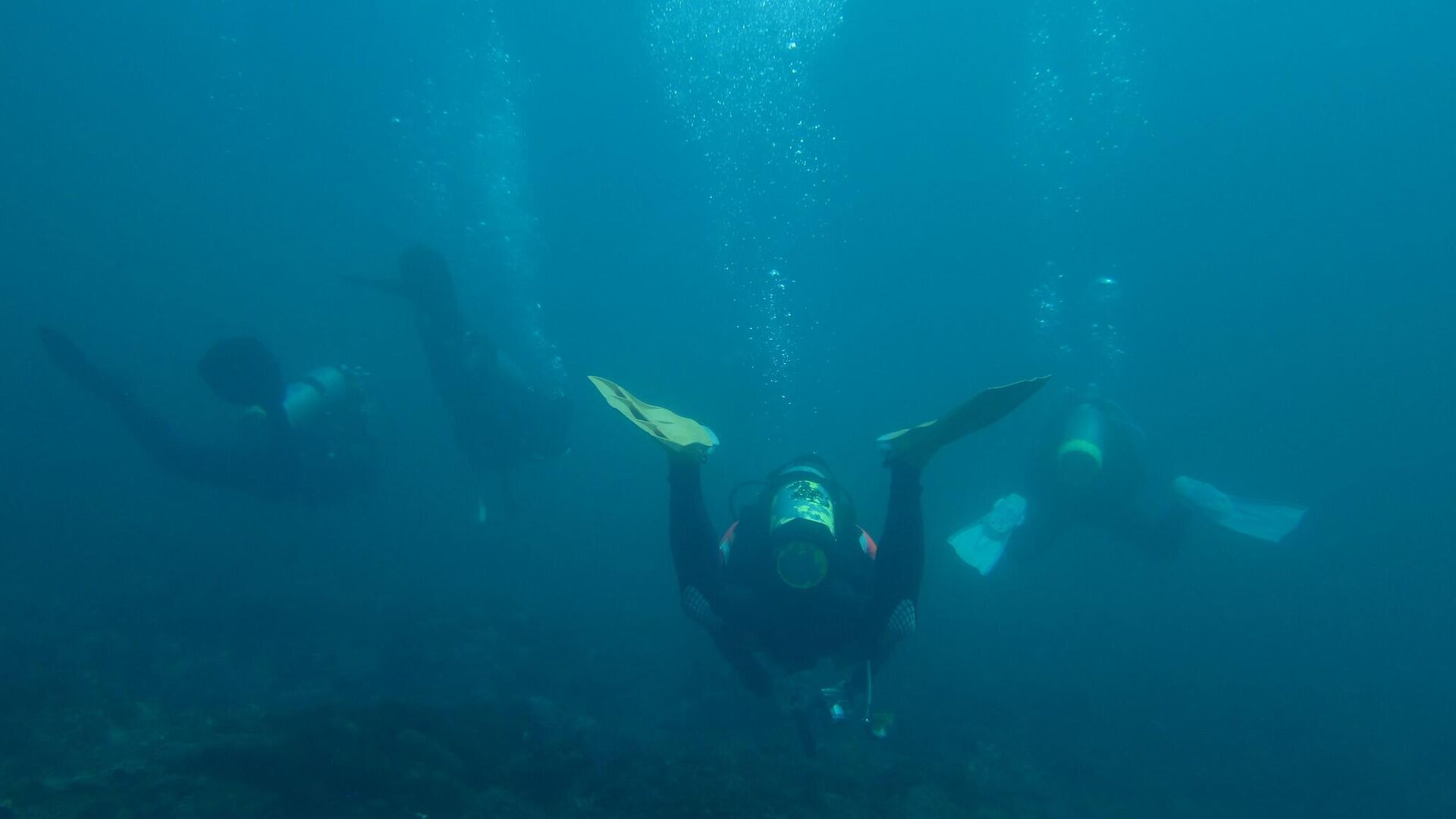https://sputnikglobe.com/20230127/scientists-identify-mystery-of-17th-century-shipwreck-reports-say-1106758730.html
Scientists Identify Mystery of 17th Century Shipwreck, Reports Say
Scientists Identify Mystery of 17th Century Shipwreck, Reports Say
Sputnik International
After a long time of painstaking work, team of specialists was able to identify the 350-years old sea wreck. It's turned out to be 17th century Dutch warship remains.
2023-01-27T13:12+0000
2023-01-27T13:12+0000
2023-05-28T15:25+0000
science & tech
netherlands
sunken ship
mystery
discovery
united kingdom (uk)
https://cdn1.img.sputnikglobe.com/img/07e7/01/1b/1106753728_3:0:2047:1150_1920x0_80_0_0_04056bb258785a9079878d8a1c0289a4.jpg
After 3 years of research, scientists from Historic England have successfully identified the wreck of a ship which has been lying in Eastbourne's waters since 1672 at a depth of 32 meters. The "Eastbourne wreck site" turned out to be the warship of the Dutch Admiralty of Rotterdam, Klein Hollandia, built in 1656, which took part in the second Anglo-Dutch War.Scientists have also noted the "remarkable" condition of the ship's remains and hope to learn even more about 17th century Dutch shipbuilding and the history of the ship. In particular, they have already established that the ship carried marble from the Apuan Alps, which are renowned for their quarries.Historic England, together with the Netherlands Cultural Heritage Agency and the Nautical Archaeology Society, analyzed the wooden hull, cannon, Italian marble tiles and pieces of Italian pottery from the ship recovered by divers. The researchers also studied the archives and measured the rings of the ship's wooden parts to determine the ship's origins as accurately as possible."The identification of the Klein Hollandia offers a glimpse back into the 17th century, giving us a chance to learn more about the maritime history of this period and to uncover treasures which have been underwater for hundreds of years," said the heritage minister, Lord Parkinson.According to archival information, in 1672 the ship was among those accompanying the Smyrna fleet from the Mediterranean to the Netherlands and was captured in battle near Wight Isle; its commander Jan van Nes was killed. However, she soon sank with English and Dutch sailors on board because of the damage she sustained.The wreckage was first discovered during a hydrographic survey in 2015 conducted by the UK Hydrographic Office. But it wasn't until 2019 that David Ronnan, a local dive operator, determined that the wreckage was the remains of a ship, the media reported.
netherlands
united kingdom (uk)
Sputnik International
feedback@sputniknews.com
+74956456601
MIA „Rosiya Segodnya“
2023
News
en_EN
Sputnik International
feedback@sputniknews.com
+74956456601
MIA „Rosiya Segodnya“
Sputnik International
feedback@sputniknews.com
+74956456601
MIA „Rosiya Segodnya“
neatherlands 17 century warship remains discovered, wight isle shipwreck identified, remains of old warships, uk royal fleet history, anglo-dutch wars, battleships history
neatherlands 17 century warship remains discovered, wight isle shipwreck identified, remains of old warships, uk royal fleet history, anglo-dutch wars, battleships history
Scientists Identify Mystery of 17th Century Shipwreck, Reports Say
13:12 GMT 27.01.2023 (Updated: 15:25 GMT 28.05.2023) The seabed holds many secrets and debris from the past, but with the right persistence one can successfully solve its riddles. Though many in their childhood thought that they would sail the ocean in search of secrets, some manage to make their dreams come true and really discover something new.
After 3 years of research, scientists from Historic England have successfully identified the wreck of a ship which has been lying in Eastbourne's waters since 1672 at a depth of 32 meters. The "Eastbourne wreck site" turned out to be the warship of the Dutch Admiralty of Rotterdam, Klein Hollandia, built in 1656, which took part in the second Anglo-Dutch War.
"From our very first dive on the wreck, back in April 2019, we have been fascinated by the range of material on the seabed. The impressive amount of wooden hull structure, the ships’ cannon, the beautifully cut marble tiles, as well as the pottery finds, all point towards this being a Dutch ship from the late 17th century coming back from Italy. Now, after four years of investigation and research, we can confidently identify the vessel," said Mark Beattie-Edwards, CEO of the Nautical Archaeology Society.
Scientists have also noted the "remarkable" condition of the ship's remains and hope to learn even more about 17th century Dutch shipbuilding and the history of the ship. In particular, they have already established that the ship carried marble from the Apuan Alps, which are renowned for their quarries.
Historic England, together with the Netherlands Cultural Heritage Agency and the Nautical Archaeology Society, analyzed the wooden hull, cannon, Italian marble tiles and pieces of Italian pottery from the ship recovered by divers. The researchers also studied the archives and measured the rings of the ship's wooden parts to determine the ship's origins as accurately as possible.
"The identification of the Klein Hollandia offers a glimpse back into the 17th century, giving us a chance to learn more about the maritime history of this period and to uncover treasures which have been underwater for hundreds of years," said the heritage minister, Lord Parkinson.
According to archival information, in 1672 the ship was among those accompanying the Smyrna fleet from the Mediterranean to the Netherlands and was captured in battle near Wight Isle; its commander Jan van Nes was killed. However, she soon sank with English and Dutch sailors on board because of the damage she sustained.
"Uncovering the story of the warship Klein Hollandia opens up another fascinating chapter in the already rich, shared maritime history between the UK and the Netherlands," said Duncan Wilson, chief executive of Historic England.
The wreckage was first discovered during a hydrographic survey in 2015 conducted by the UK Hydrographic Office. But it wasn't until 2019 that David Ronnan, a local dive operator, determined that the wreckage was the remains of a ship, the media reported.



